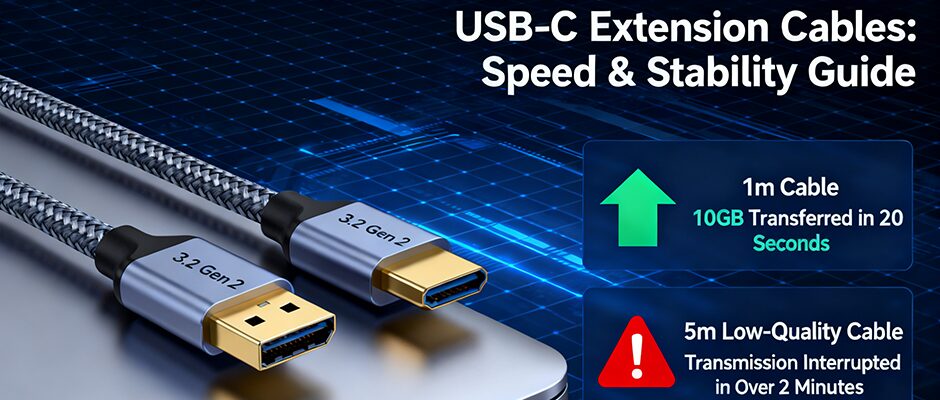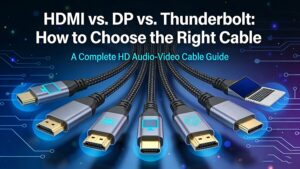A USB-C extension cable should be a convenience booster, not a performance killer. Yet many users overlook critical details, ending up with slow transfers, spotty charging, or even damaged devices. The key? Balancing length, speed, and build quality—three factors that non-negotiably define a cable’s usability. Let’s break down the pitfalls to skip and how to choose a reliable option that shines in both office and home settings.
The biggest myth about USB-C extension cables? “Longer is better.” In reality, length directly impacts performance due to electrical resistance and signal degradation . Here’s the hard truth:
Don’t waste money on cables that underdeliver. Steer clear of these mistakes and prioritize these must-have features:
- Pitfall: Buying a USB 2.0 extension for a USB 3.2 device—you’ll be stuck at 480 Mbps instead of 20 Gbps .
- Fix: Match the cable’s USB version to your device (e.g., USB 4 for Thunderbolt docks, USB 3.1 for external hard drives).
- Pitfall: Cheap cables use thin, low-purity copper or no shielding, leading to interference and overheating .
- Fix: Look for:
- High-purity oxygen-free copper (OFC) cores to reduce resistance.
- Braided nylon or reinforced casing for durability.
- Gold-plated, shielded connectors to block electromagnetic interference (EMI) .
- Pitfall: Using passive cables for distances over 3 meters—signal dies completely .
- Fix:
- Choose USB-IF certified cables (ensures compliance with speed/power standards) .
- Opt for active cables (with signal amplifiers) for lengths over 1-2 meters—they regenerate signals to maintain performance .
- Avoid no-name brands—stick to trusted options like Anker, Ugreen, or Belkin .
A good USB-C extension cable isn’t just reliable—it transforms how you use devices:
- Flexible setups: Connect a laptop to a docking station across the desk (1-2m cable) without sacrificing 4K display or fast charging .
- Remote work wins: Use a 3m active cable to place a webcam or external monitor away from your laptop for better ergonomics.
- Entertainment freedom: Extend your TV’s USB-C port to a streaming device or external SSD (1-2m) for seamless 4K playback .
- Charging convenience: Reach sofas or nightstands with a 2m cable—no more huddling near outlets.
- Smart home flexibility: Power security cameras or smart hubs in hard-to-reach spots with a certified, shielded cable .
Once you’ve chosen a cable, verify performance:
- Use speed-test tools (e.g., Blackmagic Disk Speed Test) to check transfer rates.
- Monitor charging time—if it’s 2x slower than your original cable, the extension is faulty .
A quality USB-C extension cable is an affordable upgrade that saves time, reduces frustration, and protects your devices. Skip the pitfalls, prioritize compatibility and build quality, and enjoy seamless connectivity wherever you need it.
Would you like me to create a printable USB-C extension cable buying checklist with specs to verify, length recommendations by device, and top certified brand options?







